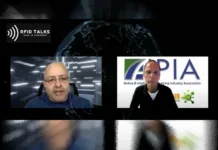Fernanda Galera and Beatriz Beserra
Organizational culture has been undergoing significant changes due to technological development for some time. We are now facing, more than ever, new challenges in our daily lives. With the immediate switch to working from home brought about by the Covid-19 pandemic, we need to adapt to the use of new technologies and the demands of a faster and more efficient Internet, in order to streamline and automate everything possible.
The correct use of concepts and terminology concerning the implementation of 5G technology, replacing 4G, or the existence of 6G, or even the use of IoT for everything, has gained greater importance. Terms that were previously intended for specialists have already made the pages of newspapers.
As defined by Oracle, the Internet of Things (IoT) describes the network of – “physical objects” – embedded with sensors, software, and other technologies for the purpose of connecting and exchanging data with other devices and systems over the internet. The IoT changes the way people interact with devices. With this technology we see objects, which before did not include data analysis, now sharing important information. This includes, for example, smart toothbrushes, increasingly automated cars and other technologies that we see in our daily lives, including our smartphones.
However, today, we still have some connectivity challenges for the broad development of IoT and this is where the importance of 5G and the joint analysis of these technologies is revealed. With the arrival of 5G technology, devices are expected to be able to communicate and connect more efficiently and securely at any time.
The 5th generation technology will reduce connection response – latency – and this will be decisive for devices with embedded Internet to be able to exchange information faster, in addition to creating more stable and secure connections. The offered bandwidth capacity will also be greater in order to meet the need arising from the growing consumption of digital content, including real-time updates, which may present instabilities due to connectivity problems.
Some other changes brought about by the union of 5G and IoT relate to advanced modulation schemes for wireless access, automated lifecycle management of network applications, software-defined networking, support for distributed network applications optimized for cloud and network splitting functions; among others.
In accordance with information disseminated through a survey carried out by the telecommunications company Ciena in Argentina, Brazil, Chile, Colombia, Mexico and Peru, 84% of respondents believe that 5G may improve quality of life and help the population’s digital accessibility. Another 56% see this technology as having a positive economic impact.
The figures released by this survey also compliment the projections disseminated by Gartner in its “IoT forecast”, which recently announced that the 5G endpoint-installed base will grow 14 times between 2020 and 2023, from 3.5 million to 48.6 million units. In 2028, the installed base will reach 324.1 million units – that is, a significant increase.
Investment in both technologies will facilitate the development of smart cities and drive the digital transformation to levels unimaginable by most of society. This also corresponds to the expectations of 81% of the consumer public, who see it as a “very attractive” development (according to the data from Ciena).
Despite seeming far from reality, such solutions are already considered and worked on by industry, especially when we think about supply chain issues. The e-commerce sector is becoming increasingly relevant with the digital transformation accelerated by the pandemic and is constantly developing and remodeling itself in view of the new possibilities and challenges brought by today’s society.
In addition to the possibility of carrying out deliveries with drones, for example, the pandemic has revealed the problems of supplying basic items such as toilet paper, even sofas and ergonomic chairs, in addition to highlighting the need to be careful with packaging which is safer and has clear details and easily accessible information about the validity of its products.
With the advent of IoT, we even already see smart packaging on the market. Despite seeming “a bit Jetsons”, such solutions do not only seek to communicate the details of the content in the best way to the consumer, thereby ensuring a better experience. They also monitor the product and ensure that its service life is longer, detailing information about its quality, condition and other details that might be needed, for example. However, this next level of technology will depend on improving Internet connectivity and accessibility for society as a whole, which is one of the consumer needs pointed out by 80% of those interviewed by Ciena. This reinforces, the intrinsic relationship between 5G and IoT as a trend, necessity and imminent future.
The integration of these technologies is one of the factors that can propel us as a society towards more effective development, beyond the speeches about the existence of a new technological revolution. Understanding the resources we have and the solutions that are available is crucial to our development.
Thus, we need to carefully analyze each new technology so that we can understand its potential, its risks, and contribute to this transformation. Thereby, we can avoid shallow talk or common sense arguments about the need to innovate, but actually assess, think, and create, while participating and associating knowledge and technologies to construct this development.
Fernanda Galera is partner at Daniel Advogados.
Beatriz Beserra is legal assistant at Daniel Advogados.



















